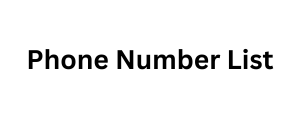I use Active Campaign as an example here. Segmentation should be done either with lists or tags. A list means that you collect people on a general list, for example. When you write and send a newsletter or weekly newsletter, your message goes to all the people on the general list who are active subscribers. If someone has left or “unsubscribed” from the list, your message will not reach them.
A tag or keyword means that people on the general list can be given an identifier that separates the people on the general list into smaller groups.
For example, if you have an online store related to dogs, you can segment people, for example
- dog toys
- dog food
- dog grooming
with tags. When it’s time to send the next newsletter, you can separate the people interested in dog toys from the general list and send your message only to them. This way, those people who are not interested in dog toys will not receive the message at all.
Segmentation therefore helps you target your messages and improve customer satisfaction, because now you are not sending “everything to everyone” but “selected messages to the few”.
For years, I segmented my weekly newsletter subscribers using tags, but I faced several different challenges. That’s why today I segment people in lists, which makes sending messages simpler.
How to segment?
Next, you need to decide how you want to segment people. I will go through two examples. The first is for you who are just starting to build an email list and the latter is for you who already have people on your email list.
Collecting an email list starts from scratch
Before you start building an email list, decide how you’re going to segment people. If you have an online store, segmentation is easy based on New Zealand Mobile Number List product categories, for example. As the person buys the product, you can add them to a different list or add a tag to them. We’ll see a little later how this is done in practice.
If there are a lot of products, it can make sense to segment people both by categories and by products or product groups. For example:
- product category = dogs
- product group = toys
- product = chew toys
A person can be on a list named “dogs” or “dog toys” and the tag “chew toys” has been added to him.
On the other hand, if you are a service or digital entrepreneur, you can segment people by entry level, as I mentioned earlier.
At this stage, when the list is just starting to be built, segmentation is relatively easy to do by offering sign-up gifts related to the products and services you want to sell. For example, the administrator of a dog online store can make a sign-up gift called “15 chew toys most suitable for dog breeds”. This way, the people who are interested in the topic download the guide and the segmentation can be done.
There are already people on the email list
If the situation is that you already have people on your email list, you can still segment them conveniently. At this point, we’re making use of sign-up gifts again, even though we don’t call them that.
First, figure out how you want to segment Phone Number List the people on your email list. After that, write your own weekly letter for each segment, which you will send in consecutive weeks.
The weekly letter is therefore sent to everyone, but in the letter you offer a targeted joining gift. Those who download it, you segment into their own lists.
I really like Active Campaign, because we can do this segmentation directly with these messages, and the person doesn’t have to join anything again. He just clicks on the link in the message.








Leave a Reply